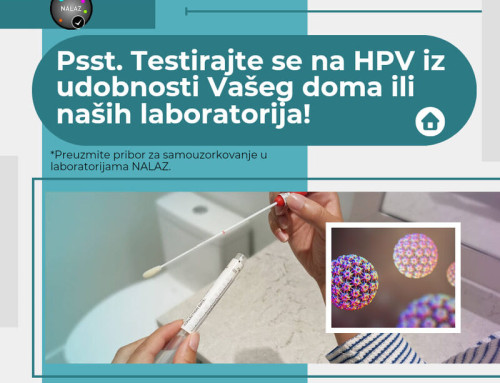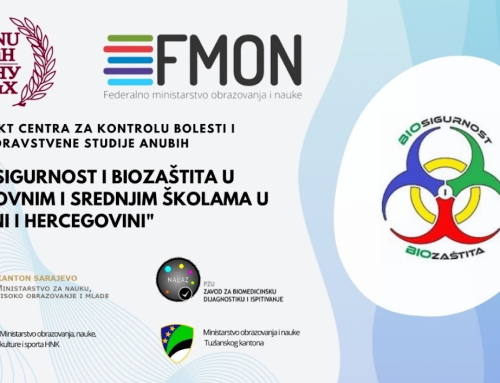
- Od strane muškaraca (40%): poremećaji spermatogeneze (manja količina ejakulata, manji broj spermatozoida, veći broj varicocellae).
- Od strane žene 40%: endokrinološki, cervikalni, endometrijalni, tubarni faktor
- Kombinovani 10% (udružen muški i ženski faktor)
- Idiopatski sterilitet 10%
Kroz istoriju žena je smatrana jedinim krivcem za neplodnost para te je zbog toga doživljavala različita poniženja i uvrede. Prema literaturi 1980.godine je zastupljenost muške neplodnosti je bila oko 20%, 2000.te oko 40% a 2010. čak 50%. U istraživanju uzroka neplodnosti najprije se uzima detaljna anamneza i uradi spermogram koji je krucijalna pretraga u ispitivanju bračne neplodnosti. Spermogram , zašto? Analiza je jednostavna, brza, dostupna, neinvazivna, jeftina, rezultati su poznati za par sati, ne zahtijeva posebnu pripremu (osim 2-3 dana abstinencije), otkriva najmanje 50% uzroka bračne neplodnosti, značajno skraćuje i pojeftinjuje ispitivanje bračne neplodnosti. Uzorak se dobija masturbacijom posle apstinencije od 3-5 dana. Kompletan uzorak mora da bude skupljen u sterilnu posudu i mora da bude analiziran za 30 do maksimalno 60 minuta posle davanja. Vrlo je bitno, da se laboratorije prilikom izrade uzoraka pridržavaju kriterijuma i preporuka SZO u cilju izjednačavanja rezultata i mogućeg poređenja između uzoraka, nezavisno od laboratorije. Na žalost, kod nas se u malom broju laboratorija primjenjuju standardi SZO. Jedna od laboratorija u kojoj se primjenjuju propisani stabdardi SZO je laboratorija u PZU Zavodu za biomedicinsku dijagnostiku i ispitivanje „ NALAZ” u Sarajevu. Normalan nalaz spermograma:
- Volumen >=2 mL
- pH >=7.2
- Broj spermatozoida >=20 miliona u mL
- Pokretljivost >50 % progresivno pokretnih
- (12 miliona progresivno pokretnih)
- Morfologija >50 % normalnih*
- Leukociti
Patološki spermogram: oligospermija-smanjen broj spermatozoida, azoospermija-odsustvo spermatozoida, astenospermija-smanjena pokretljivost spermatozoida, teratospermia-više od 20%patoloških formi, piospermija-povećan broj leukocita u spermi, aspermia-bez ejakulata, nekrospermia-nema pokretnih spermija. A ŠTA AKO NALAZ NIJE UREDAN? Na osnovu jednog nalaza patološkog spermograma , ne bi trebali govoriti o neplodnosti. U tom slučaju savjetujemo muškarca da eliminiše vanjske faktore (pušenje, alkohol, isparenja, rad na visokim temperaturama), saniramo eventualnu infekciju (urinokultura, spermokultura), preporučimo terapiju viteminima, mineralima i svakako ponovimo nalaz za tri mjeseca. Zavisno od ponovljenog nalaza postupamo po slijedećem algoritmu. Dalji postupak u odnosu na broj spermatozoida na ponovljenom spermogramu: 5-10 miliona i žena starija od 35 godina vantjelesna oplodnja (MIKROINJEKCIJA) 5-10 miliona i žena mlađa od 35 godina (INSEMINACIJA) 11-20 miliona (INSEMINACIJA), minimalna stimulacija uz kontrolisanu ovulaciju AZOOSPERMIJA Azoospermija ne znači i muška neplodnost jer se u 20-40% slučajeva radi o obstruktivnoj azoospermiji koja se dijagnostikuje punkcijom ili biopsijom testisa u centrima za asistiranu humanu reprodukciju. Ukoliko se radi o azoospermiji treba najprije uraditi hormonski status (FSH, LH, testosteron). Ako je nalaz hormona uredan, obavi se punkcija testisa. Ukoliko se u punktatu ne dobije vitalnih spermatozoida, preporučuje se urološki pregled, kariotipizacija i biopsija testisa.
Prim. doc. dr. Lejla Mešalić

The most frequent cases of marital infertility are:
- On the side of a man (40%): disturbed spermatogenesis (smaller quantity of ejaculate, smaller number of varicocellae).
- On the side of a woman 40%: endocrinology, cervical, endometrial, tubular factor
- Combined 10% (associated male and female factor)
- Idiopathic sterility 10%
Throughout the history, woman was considered to be the only culprit for infertility of a couple, so therefore she was humiliated and insulted in various ways. According to the literature from 1980, male infertility percentage was about 20%, in 2000 about 40% and in 2010, it was even 50%. While testing the infertility sample, detailed anamnesis is taken first and spermiogram is made, which is the crucial test in the assessment of marital infertility.
Spermiogram, why?
Analysis is simple, fast, available, non-invasive, cheap, results are known in few hours, and it does not require particular preparations (except for 2-3 days abstinence), it reveals at least 50% of causes to marital infertility, it significantly reduces and makes cheaper the marital infertility testing procedure.
The sample is obtained from masturbation after 3-5 days abstinence. The whole sample must be collected to sterile dish and must be analysed in 30 to 60 minutes after collection. It is very important that laboratories, while developing the sample, comply with WHO criteria and recommendations in order to equalise the results and enable comparisons between the samples, regardless the laboratory. Unfortunately, in our country, only few laboratories apply WHO standards. One of the laboratories that apply the prescribed WHO standards is the laboratory in the Public Health Institution Institute for biomedical diagnostic and researches „ NALAZ” in Sarajevo.
Normal spermiogram result:
- Volume >=2 mL
- pH >=7.2
- Number of spermatozoids >=20 million per mL
- Movability >50 % progressively movable
- (12 million progressively movable)
- Morphology >50 % normal*
- Leucocytes
Pathological spermiogram: oligospermia – reduced number of spermatozoids, azoospermia – absence of spermatozoids, astenospermia – reduced movability of spermatozoids, teratospermia – more than 20% pathologic forms, piospermia – increased number of leucocytes in sperm, aspermia – without ejaculate, necrospermia – no movable sperms.
WHAT IF TESTS RESULT IS NOT CLEAR?
We should not talk about infertility based on one pathological spermiogram test. In such case, we advise the man to eliminate external factors (smoking, alcohol, evaporation, work at high temperatures), we treat eventual infection (urinary tract, sperm culture), we recommend vitamin and mineral therapy and we definitely repeat the tests in three months. Depending on the repeated test results, we proceed according to the following algorithm.
Further procedure in relation to the number of spermatozoids at the repeated spermiogram:
5-10 million and woman over 35 years of age, extra uterine fertilization (MICROINJECTION)
5-10 million and woman below 35 years of age (INSEMINATION)
11-20 million (INSEMINATION), minimum stimulation with controlled ovulation
AZOOSPERMIA
Azoospermia does not mean male infertility as well, because in 20-40% cases it is obstructive azoospermia diagnosed with punction or biopsy of testicles in the centres for assisted humane reproduction. If it is azoospermia, the hormone status should be tested first (FSH, LH, testosterone). If the hormone test result is clear, the punction of testicles should be done. If no vital spermatozoids are obtained from the punction, urological screening is recommended as well as karyotyping and biopsy of testicles.
Prim. doc. dr. Lejla Mešalić




